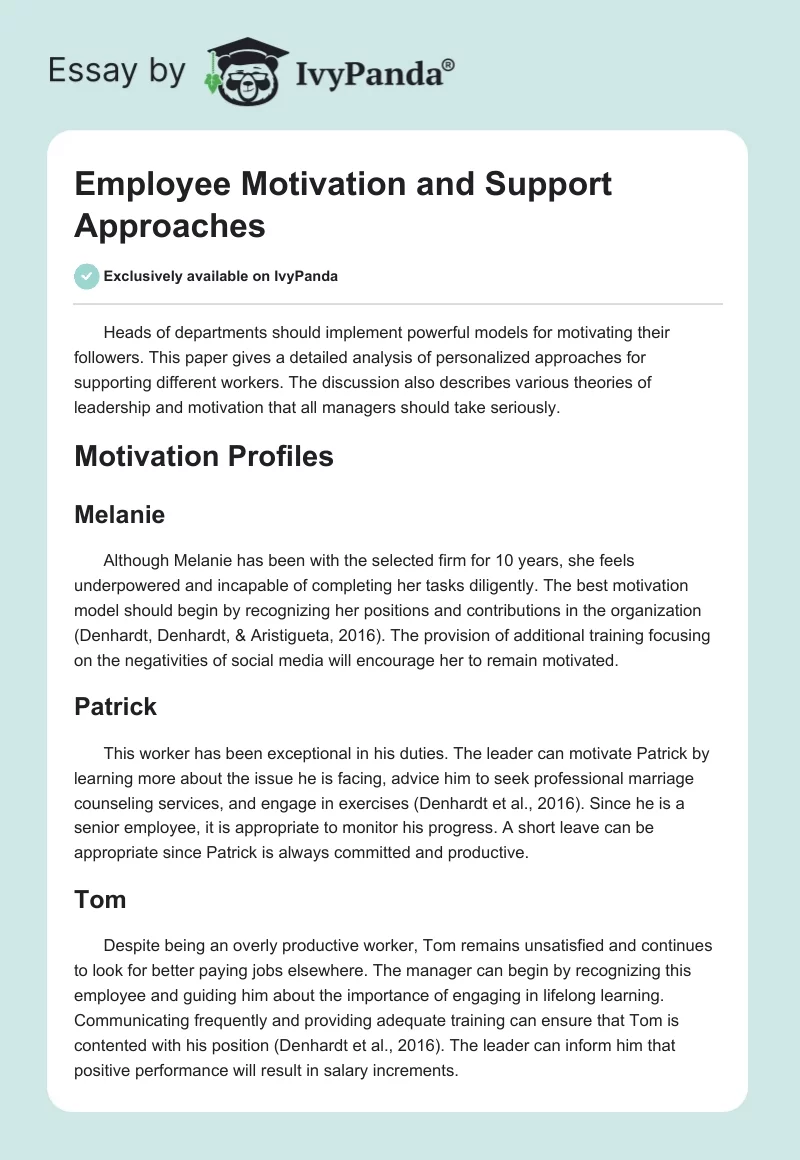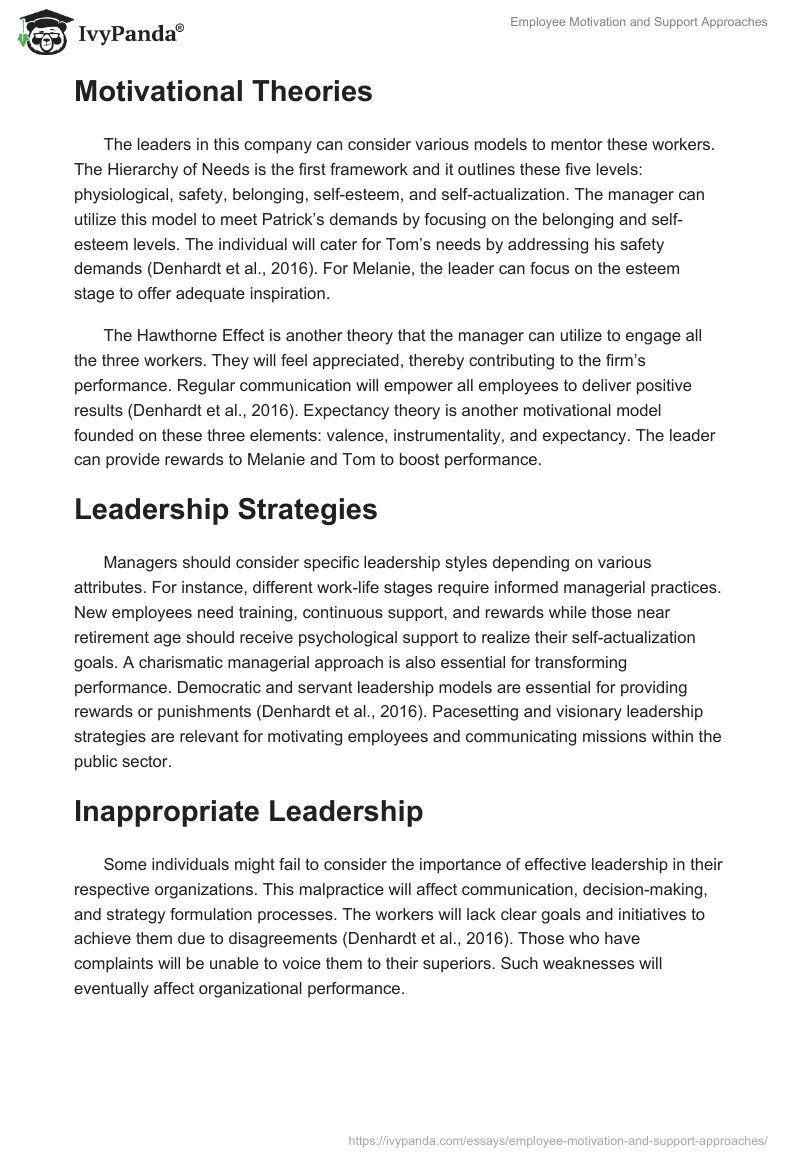Heads of departments should implement powerful models for motivating their followers. This paper gives a detailed analysis of personalized approaches for supporting different workers. The discussion also describes various theories of leadership and motivation that all managers should take seriously.
Motivation Profiles
Melanie
Although Melanie has been with the selected firm for 10 years, she feels underpowered and incapable of completing her tasks diligently. The best motivation model should begin by recognizing her positions and contributions in the organization (Denhardt, Denhardt, & Aristigueta, 2016). The provision of additional training focusing on the negativities of social media will encourage her to remain motivated.
Patrick
This worker has been exceptional in his duties. The leader can motivate Patrick by learning more about the issue he is facing, advice him to seek professional marriage counseling services, and engage in exercises (Denhardt et al., 2016). Since he is a senior employee, it is appropriate to monitor his progress. A short leave can be appropriate since Patrick is always committed and productive.
Tom
Despite being an overly productive worker, Tom remains unsatisfied and continues to look for better paying jobs elsewhere. The manager can begin by recognizing this employee and guiding him about the importance of engaging in lifelong learning. Communicating frequently and providing adequate training can ensure that Tom is contented with his position (Denhardt et al., 2016). The leader can inform him that positive performance will result in salary increments.
Motivational Theories
The leaders in this company can consider various models to mentor these workers. The Hierarchy of Needs is the first framework and it outlines these five levels: physiological, safety, belonging, self-esteem, and self-actualization. The manager can utilize this model to meet Patrick’s demands by focusing on the belonging and self-esteem levels. The individual will cater for Tom’s needs by addressing his safety demands (Denhardt et al., 2016). For Melanie, the leader can focus on the esteem stage to offer adequate inspiration.
The Hawthorne Effect is another theory that the manager can utilize to engage all the three workers. They will feel appreciated, thereby contributing to the firm’s performance. Regular communication will empower all employees to deliver positive results (Denhardt et al., 2016). Expectancy theory is another motivational model founded on these three elements: valence, instrumentality, and expectancy. The leader can provide rewards to Melanie and Tom to boost performance.
Leadership Strategies
Managers should consider specific leadership styles depending on various attributes. For instance, different work-life stages require informed managerial practices. New employees need training, continuous support, and rewards while those near retirement age should receive psychological support to realize their self-actualization goals. A charismatic managerial approach is also essential for transforming performance. Democratic and servant leadership models are essential for providing rewards or punishments (Denhardt et al., 2016). Pacesetting and visionary leadership strategies are relevant for motivating employees and communicating missions within the public sector.
Inappropriate Leadership
Some individuals might fail to consider the importance of effective leadership in their respective organizations. This malpractice will affect communication, decision-making, and strategy formulation processes. The workers will lack clear goals and initiatives to achieve them due to disagreements (Denhardt et al., 2016). Those who have complaints will be unable to voice them to their superiors. Such weaknesses will eventually affect organizational performance.
Conclusion
The above discussion has reveals that different workers in a firm will have diverse expectations and goals. Those who feel less empowered will not pursue their goals diligently. Managers should, therefore, consider the most appropriate motivational theories and leadership strategies depending on these aspects: work life stage, rewards and punishments, and the desire for motivation.
Reference
Denhardt, R. B., Denhardt, J. V., & Aristigueta, M. P. (2016). Managing human behavior in public and nonprofit organizations (4th ed.). Thousand Oaks, CA: Sage.


